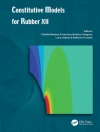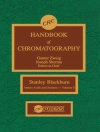Most composites, particularly those made using thermoset resins, cannot be recycled or reused. As a result, most of them end up in landfills at the end of their useful life which is neither sustainable nor environment-friendly. Various laws enacted by Governments around the world and heightened global awareness about sustainability and global warming is changing this situation. Significant research is being conducted in developing and utilizing sustainable fibers and resins, mostly derived from plant, to fabricate ‘Green’ composites. The significant progress in the past 20 or so years in this field has led to the development of green composites with high strength or so called Advanced Green Composites. More interestingly, green composites have also acquired various different properties such as fire resistance, transparency, barrier to gases and others. The term ‘advanced’ which only included high strength and stiffness now includes all these special properties. The world is on the cusp of a major change, and once fully developed, such composites could be used in applications ranging from automobiles to sporting goods, from circuit boards to housing and from furniture to packaging. This book, by presenting the state-of-the-art developments in many aspects of advanced green composites adds significantly to the knowledge base that is critical for their success of expanding their use in applications never seen before. The chapters are written by world’s leading researchers and present in-depth information in a simple way.
This provides readers and researchers the latest developments in the field of ‘Green’ resins (with ways of strengthening them), High Strength Green Fibers (including micro and nano-cellulose fibrils/fibers) and Green Composites in the first few chapters. The introductory chapter summarizes the consequences of using conventional, petroleum-based materials and the need for green composites as well as the progress being made in this field. After that the book delves in to Advanced Green Composites in a broader sense and includes chapters on High Strength Green Composites, Self-healing Green Composites, Transparent Green Composites, All-cellulose composites, Toughened Green Composites, Green Biofoams, Bioinspired Shape Memory Composites, etc. The chapters are written by the experts who are highly respected in their fields.
Giới thiệu về tác giả
Anil N. Netravali is the Jean and Douglas Mc Lean Professor of Fiber Science and Apparel Design in the Department of Fiber Science and Apparel Design at Cornell University. Since 1984 he has been working in the field of polymer composites. He has published widely in the area of fiber/resin interface characterization and control through fiber surface modification and resin modification using nanoparticles and nanofibrils. In the past 25 years he has made significant contributions in the area of ‘green’ resins, composites and nanocomposites that are fully derived from plants. He was the recipient of the Fiber Society’s Founders Award in 2012 and received the Green of the Crop award from the Creative Core (NY) in 2010.












